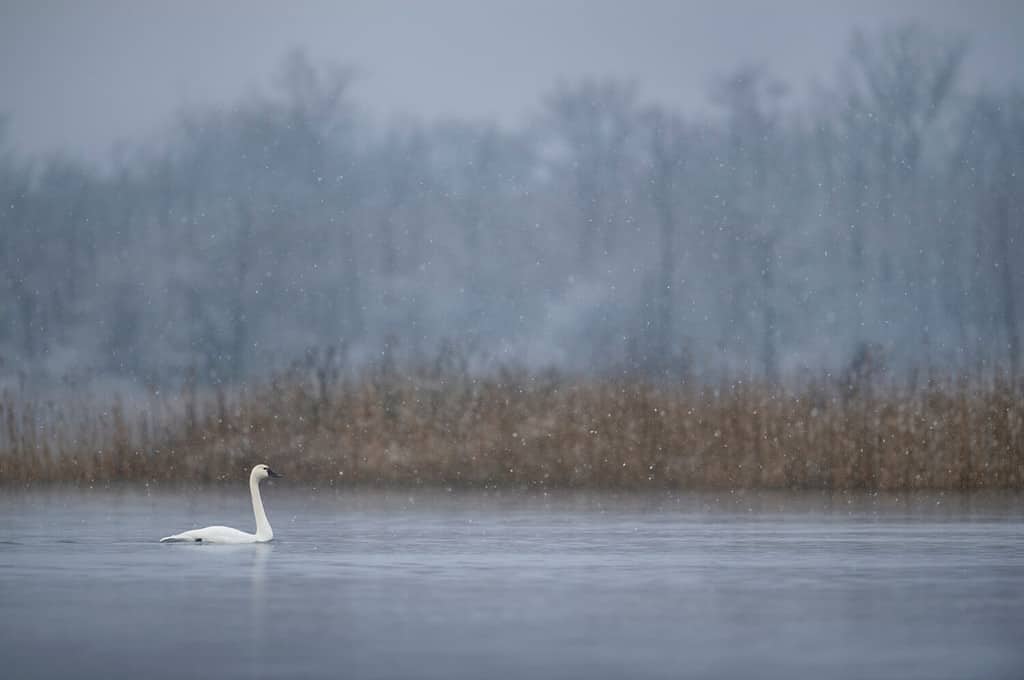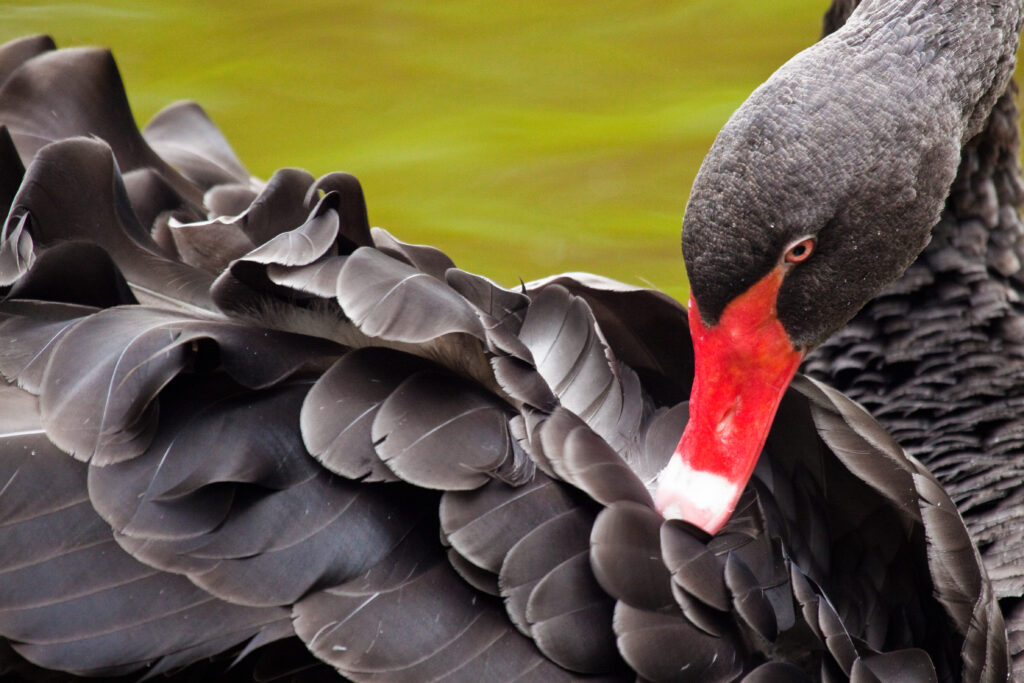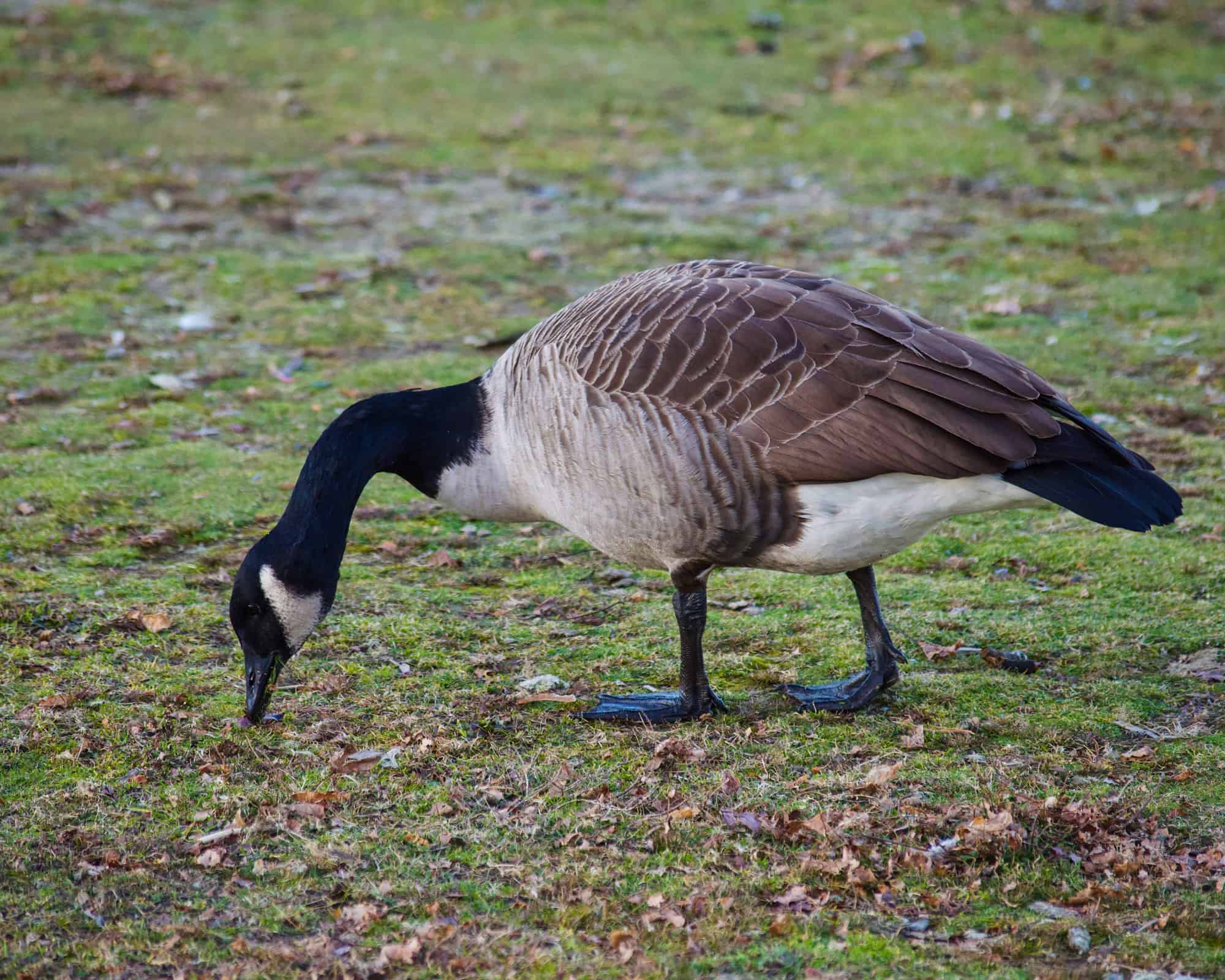Swans are considered one of the most romantic birds, with images of their heads together in a heart formation being a popular feature in photography and art. So are these birds truly loyal and monogamous, or are the stories of mating for life just a romantic tale?
In this article, we’ll answer whether swans mate for life and share six amazing facts about their mating habits.
Do Swans Mate for Life?
Like many birds, swans form lasting monogamous pair bonds that may last for many years or their entire lifespan. However, swan couples will separate and find a new partner or commit adultery if they fail to produce offspring together.
While some swans mate for life, it’s not a given. Let’s explore some fascinating facts about the mating cycles and romantic lives of swans.
1. Swans Start Mating at 2-7 Years Old

Most swans don’t find a mate during their first breeding season.
©Paul Wranek – Copyright A-Z Animals
Swans start mating at 2-7 years old, depending on the species (of which there are six recognized species of swan). Swans tend to start the mating ritual in the spring, with courtship and reproduction leading into the summer.
When a swan reaches mating age, it will venture into the collective to find a mate. This mate will be their partner for years, maybe even their entire life! Yet, some swans don’t find a mate during the first few mating seasons after coming of age. Larger, more dominant male swans will often overpower younger male swans on the prowl.
The benefit of forming a long-term monogamous pair bond is that it saves time and effort during future mating seasons, increasing the longevity of the species.
2. Swans Flirt With Each Other

Swans nod and press their beaks and chests together to start the mating process.
©iStock.com/Dee Carpenter Photography
Those romantic images of swans with their heads together making a heart shape are a part of the courting ritual that sparks mating season.
When swans find a potential mate, they’ll face each other and start nodding while puffing and preening their feathers. As the ritual continues, they’ll nod and preen more vigorously, often dipping their heads below the water and back up. They’ll continue to move closer to one another throughout.
If both swans are in agreement, they’ll press their chests together, touch beaks, and continue nodding. Pressing together and touching beaks is an ongoing sign of affection throughout the courtship. It’s this process, combined with their long, elegant necks, that creates the iconic heart shape.
3. Swans Grieve Their Mate

A swan may grieve its mate for a while, but then it will re-enter the courtship process.
©Ray Hennessy/Shutterstock.com
It’s a myth that swans will pine after their deceased mate for the rest of their lives. In reality, swans go through a grieving process and often recover, eventually finding another mate. However, some anecdotes from swan sanctuaries indicate that some swans isolate themselves after losing a mate and eventually die.
In most cases, a swan may miss a breeding season and then re-enter the courtship process the following season.
4. Female Black Swans Are the Most Adulterous

Scientists have studied the adultery habits of black swans with interesting results.
©Jearu/Shutterstock.com
Romantic imagery aside, swans are known adulterers. Unlike the complexities of human adultery, this practice is fuelled by a desire to reproduce and protect the species as much as possible.
Female black swans are believed to be the most adulterous of the swans. Zoology experts at the University of Melbourne conducted a study that indicated one in seven (15%) eggs raised by male black swans are not biologically his. The three-year study used microchipping and DNA testing to confirm these results.
During the study at Albert Park Lake in Australia, 60 cobs (male swans) were fitted with a microchip on their tail feathers. The pens (female swans) were fitted with a decoder device that would detect the microchip during mating and record which cob was present, the date, and the time.
It’s worth noting that other swan breeds haven’t been a part of such extensive studies. It’s entirely possible that this statistic is consistent across all breeds or that another species is more adulterous than the black swan. Yet, females are more successful at finding mates.
5. Swans Divorce Over Failure to Mate

The most common reason for swans to separate is a failure to reproduce.
©iStock.com/Zeke1
Swans have a relatively low divorce rate among birds, contributing to the thought that swans mate for life. The estimated swan divorce rate is 5-6%. Interestingly, the divorce rate among swans who successfully produce offspring is 3%, while the divorce rate among swans who fail to mate is 9%.
It’s unknown why the 3% of swans with successful breeding patterns separate. Scientists expect the females to seek out a stronger specimen for their future offspring.
6. Cross-Species Breeding Occurs Among Swans

While cross-breeding is rare, swans have mated with Canadian Geese.
©iStock.com/Wirestock
Swan cross-species breeding is exceedingly rare in the wild but often occurs in captivity and sanctuaries. Black swans have been known to breed with mute swans, creating a hybrid called a blute swan. There have also been incidents of swans mating with Canadian geese, creating a hybrid known as the swoose.
The photo featured at the top of this post is © iStock.com/steved_np3
Thank you for reading! Have some feedback for us? Contact the AZ Animals editorial team.






